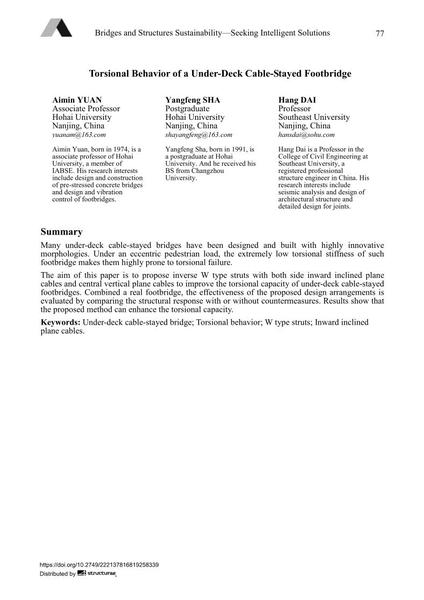Torsional Behavior of a Under-Deck Cable-Stayed Footbridge

|
|
|||||||||||
Bibliographic Details
| Author(s): |
Aimin Yuan
Yangfeng Sha Hang Dai |
||||
|---|---|---|---|---|---|
| Medium: | conference paper | ||||
| Language(s): | English | ||||
| Conference: | IABSE Conference: Bridges and Structures Sustainability - Seeking Intelligent Solutions, Guangzhou, China, 8-11 May 2016 | ||||
| Published in: | IABSE Conference, Guangzhou, China, 8 – 11 May 2016 | ||||
|
|||||
| Page(s): | 77-84 | ||||
| Total no. of pages: | 8 | ||||
| Year: | 2016 | ||||
| DOI: | 10.2749/222137816819258339 | ||||
| Abstract: |
Many under-deck cable-stayed bridges have been designed and built with highly innovative morphologies. Under an eccentric pedestrian load, the extremely low torsional stiffness of such footbridge makes them highly prone to torsional failure. The aim of this paper is to propose inverse W type struts with both side inward inclined plane cables and central vertical plane cables to improve the torsional capacity of under-deck cable-stayed footbridges. Combined a real footbridge, the effectiveness of the proposed design arrangements is evaluated by comparing the structural response with or without countermeasures. Results show that the proposed method can enhance the torsional capacity. |
||||
| Keywords: |
Under-deck cable-stayed bridge Torsional behavior W type struts Inward inclined plane cables
|
||||

